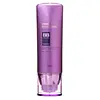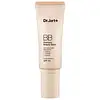What's inside
What's inside
 Key Ingredients
Key Ingredients

 Benefits
Benefits

 Concerns
Concerns

 Ingredients Side-by-side
Ingredients Side-by-side

Water
Skin ConditioningCI 77891
Cosmetic ColorantCyclopentasiloxane
EmollientEthylhexyl Methoxycinnamate
UV AbsorberPhenyl Trimethicone
Skin ConditioningButylene Glycol
HumectantCyclohexasiloxane
EmollientZinc Oxide
Cosmetic ColorantIsododecane
EmollientCetyl PEG/PPG-10/1 Dimethicone
EmulsifyingMethylpropanediol
SolventNiacinamide
SmoothingButylene Glycol Dicaprylate/Dicaprate
EmollientPolyglyceryl-4 Isostearate
EmulsifyingHydrogenated Polyisobutene
EmollientSodium Chloride
MaskingDisteardimonium Hectorite
StabilisingPrunus Amygdalus Dulcis Oil
Skin ConditioningRaspberry Seed Oil/Tocopheryl Succinate Aminopropanediol Esters
Skin ConditioningSodium Hyaluronate
HumectantPortulaca Oleracea Extract
Skin ConditioningGynostemma Pentaphyllum Leaf/Stem Extract
AntioxidantPlukenetia Volubilis Seed Oil
EmollientSchinus Terebinthifolia Seed Extract
AstringentSorbitan Isostearate
EmulsifyingOzokerite
Emulsion StabilisingMethyl Methacrylate Crosspolymer
Dimethicone
EmollientHexyl Laurate
EmollientDimethicone/Vinyl Dimethicone Crosspolymer
Skin ConditioningCaprylic/Capric Triglyceride
MaskingEthylhexylglycerin
Skin ConditioningAluminum Hydroxide
EmollientBeeswax
Emulsion StabilisingStearic Acid
CleansingTriethoxycaprylylsilane
Hydrogenated Poly(C6-14 Olefin)
EmollientPropylene Carbonate
SolventAdenosine
Skin ConditioningAlumina
AbrasiveAscorbic Acid
AntioxidantHydrolyzed Extensin
Skin ConditioningCeramide NP
Skin ConditioningLinoleic Acid
CleansingRetinol
Skin ConditioningTocopherol
AntioxidantCalcium Aluminum Borosilicate
Beta-Glucan
Skin ConditioningDisodium EDTA
Xanthan Gum
EmulsifyingPhenoxyethanol
PreservativeParfum
MaskingLimonene
PerfumingButylphenyl Methylpropional
PerfumingLinalool
PerfumingCitronellol
PerfumingCI 77492
Cosmetic ColorantCI 77491
Cosmetic ColorantCI 77499
Cosmetic ColorantWater, CI 77891, Cyclopentasiloxane, Ethylhexyl Methoxycinnamate, Phenyl Trimethicone, Butylene Glycol, Cyclohexasiloxane, Zinc Oxide, Isododecane, Cetyl PEG/PPG-10/1 Dimethicone, Methylpropanediol, Niacinamide, Butylene Glycol Dicaprylate/Dicaprate, Polyglyceryl-4 Isostearate, Hydrogenated Polyisobutene, Sodium Chloride, Disteardimonium Hectorite, Prunus Amygdalus Dulcis Oil, Raspberry Seed Oil/Tocopheryl Succinate Aminopropanediol Esters, Sodium Hyaluronate, Portulaca Oleracea Extract, Gynostemma Pentaphyllum Leaf/Stem Extract, Plukenetia Volubilis Seed Oil, Schinus Terebinthifolia Seed Extract, Sorbitan Isostearate, Ozokerite, Methyl Methacrylate Crosspolymer, Dimethicone, Hexyl Laurate, Dimethicone/Vinyl Dimethicone Crosspolymer, Caprylic/Capric Triglyceride, Ethylhexylglycerin, Aluminum Hydroxide, Beeswax, Stearic Acid, Triethoxycaprylylsilane, Hydrogenated Poly(C6-14 Olefin), Propylene Carbonate, Adenosine, Alumina, Ascorbic Acid, Hydrolyzed Extensin, Ceramide NP, Linoleic Acid, Retinol, Tocopherol, Calcium Aluminum Borosilicate, Beta-Glucan, Disodium EDTA, Xanthan Gum, Phenoxyethanol, Parfum, Limonene, Butylphenyl Methylpropional, Linalool, Citronellol, CI 77492, CI 77491, CI 77499
Water
Skin ConditioningCyclopentasiloxane
EmollientCyclohexasiloxane
EmollientGlycerin
HumectantPEG-10 Dimethicone
Skin ConditioningTalc
AbrasiveHexyl Laurate
EmollientDipropylene Glycol
HumectantC12-15 Alkyl Benzoate
AntimicrobialNiacinamide
SmoothingDiphenylsiloxy Phenyl Trimethicone
Skin ConditioningDisteardimonium Hectorite
StabilisingCitrus Aurantium Bergamia Fruit Oil
MaskingCitrus Limon Peel Oil
MaskingCitrus Aurantifolia Oil
CleansingPinus Sylvestris Leaf Oil
MaskingCitrus Aurantium Dulcis Peel Oil
MaskingAdenosine
Skin ConditioningAllantoin
Skin ConditioningEthylhexylglycerin
Skin ConditioningTrihydroxystearin
Skin ConditioningPolyglyceryl-6 Polyricinoleate
EmulsifyingMethicone
EmollientDimethicone
EmollientDimethicone/Vinyl Dimethicone Crosspolymer
Skin Conditioning1,2-Hexanediol
Skin ConditioningTriethoxycaprylylsilane
Magnesium Sulfate
Eucalyptus Globulus Leaf Oil
PerfumingLimonene
PerfumingTocopherol
AntioxidantBHT
AntioxidantPhenoxyethanol
PreservativeCI 77891
Cosmetic ColorantCI 77492
Cosmetic ColorantCI 77491
Cosmetic ColorantIron Oxides
Water, Cyclopentasiloxane, Cyclohexasiloxane, Glycerin, PEG-10 Dimethicone, Talc, Hexyl Laurate, Dipropylene Glycol, C12-15 Alkyl Benzoate, Niacinamide, Diphenylsiloxy Phenyl Trimethicone, Disteardimonium Hectorite, Citrus Aurantium Bergamia Fruit Oil, Citrus Limon Peel Oil, Citrus Aurantifolia Oil, Pinus Sylvestris Leaf Oil, Citrus Aurantium Dulcis Peel Oil, Adenosine, Allantoin, Ethylhexylglycerin, Trihydroxystearin, Polyglyceryl-6 Polyricinoleate, Methicone, Dimethicone, Dimethicone/Vinyl Dimethicone Crosspolymer, 1,2-Hexanediol, Triethoxycaprylylsilane, Magnesium Sulfate, Eucalyptus Globulus Leaf Oil, Limonene, Tocopherol, BHT, Phenoxyethanol, CI 77891, CI 77492, CI 77491, Iron Oxides
 Reviews
Reviews

Ingredients Explained
These ingredients are found in both products.
Ingredients higher up in an ingredient list are typically present in a larger amount.
Adenosine is in every living organism. It is one of four components in nucleic acids that helps store our DNA.
Adenosine has many benefits when used. These benefits include hydrating the skin, smoothing skin, and reducing wrinkles. Once applied, adenosine increases collagen production. It also helps with improving firmness and tissue repair.
Studies have found adenosine may also help with wound healing.
In skincare products, Adenosine is usually derived from yeast.
Learn more about AdenosineCi 77491 is also hydrated iron III oxide. It's sole purpose is to give a red/pink hue to products.
Iron III oxides are classified as inorganic chemicals for coloring.
Synthetically created Ci 77491 is considered safer than those naturally found. This is because the synthetically created version may contain less impurities. Iron oxides are generally non-toxic and non-allergenic.
Learn more about CI 77491Ci 77492 is also hydrated iron III oxide. It's sole purpose is to give a yellow hue to products.
Iron III oxides are classified as inorganic chemicals for coloring.
Synthetically created Ci 77492 is considered safer than those naturally found. This is because the synthetically created version may contain less impurities. Iron oxides are generally non-toxic and non-allergenic.
Learn more about CI 77492Ci 77891 is a white pigment from Titanium dioxide. It is naturally found in minerals such as rutile and ilmenite.
It's main function is to add a white color to cosmetics. It can also be mixed with other colors to create different shades.
Ci 77891 is commonly found in sunscreens due to its ability to block UV rays.
Learn more about CI 77891Cyclohexasiloxane is a type of silicone more commonly known as D6. It is an emollient and solvent.
Cyclohexasiloxane is used to evenly distribute ingredients throughout the product. When applied to the skin, Cyclohexasiloxane evaporates and leaves behind a silky feel.
As an emollient, it can help the skin feel soft and hydrated. It is also used to reduce frizz in hair products.
Learn more about CyclohexasiloxaneCyclopentasiloxane, or D5, is a silicone used to improve texture of products and trap moisture.
D5 is considered lightweight and volatile. Volatile means it evaporates quickly after application. Once evaporated, D5 leaves a thin barrier that helps keep skin hydrated.
It is also an emollient. Emollients help soften the skin and prevent water loss. Silicones create a silky texture in products. D5 helps other ingredients become more spreadable.
Studies show D5 is safe to use in skincare products. We recommend speaking with a skincare professional if you have concerns.
Learn more about CyclopentasiloxaneDimethicone is a type of synthetic silicone created from natural materials such as quartz.
What it does:
Dimethicone comes in different viscosities:
Depending on the viscosity, dimethicone has different properties.
Ingredients lists don't always show which type is used, so we recommend reaching out to the brand if you have questions about the viscosity.
This ingredient is unlikely to cause irritation because it does not get absorbed into skin. However, people with silicone allergies should be careful about using this ingredient.
Note: Dimethicone may contribute to pilling. This is because it is not oil or water soluble, so pilling may occur when layered with products. When mixed with heavy oils in a formula, the outcome is also quite greasy.
Learn more about DimethiconeThis ingredient is a silicone used to improve the texture of products and absorb oil. It does not get absorbed into the skin.
Like other silicones, Dimethicone/Vinyl Dimethicone Crosspolymer helps condition the skin by creating a barrier. In this sense, it can act as an emollient and trap moisture in.
This ingredient is a type of elastomer.
Learn more about Dimethicone/Vinyl Dimethicone CrosspolymerDisteardimonium Hectorite comes from the clay mineral named hectorite. It is used to add thickness to a product.
It can also help stabilize a product by helping to disperse other ingredients.
Hectorite is a rare, white clay mineral.
Learn more about Disteardimonium HectoriteEthylhexylglycerin (we can't pronounce this either) is commonly used as a preservative and skin softener. It is derived from glyceryl.
You might see Ethylhexylglycerin often paired with other preservatives such as phenoxyethanol. Ethylhexylglycerin has been found to increase the effectiveness of these other preservatives.
Hexyl Laurate isn't fungal acne safe.
Limonene is a fragrance that adds scent and taste to a formulation.
It's found in the peel oil of citrus fruits and other plants such as lavender and eucalyptus. The scent of limonene is generally described as "sweet citrus".
Limonene acts as an antioxidant, meaning it helps neutralize free radicals.
When exposed to air, oxidized limonene may sensitize the skin. Because of this, limonene is often avoided by people with sensitive skin.
The term 'fragrance' is not regulated in many countries. In many cases, it is up to the brand to define this term. For instance, many brands choose to label themselves as "fragrance-free" because they are not using synthetic fragrances. However, their products may still contain ingredients such as essential oils that are considered a fragrance.
Learn more about LimoneneNiacinamide is a multitasking form of vitamin B3 that strengthens the skin barrier, reduces pores and dark spots, regulates oil, and improves signs of aging.
And the best part? It's gentle and well-tolerated by most skin types, including sensitive and reactive skin.
You might have heard of "niacin flush", or the reddening of skin that causes itchiness. Niacinamide has not been found to cause this.
In very rare cases, some individuals may not be able to tolerate niacinamide at all or experience an allergic reaction to it.
If you are experiencing flaking, irritation, and dryness with this ingredient, be sure to double check all your products as this ingredient can be found in all categories of skincare.
When incorporating niacinamide into your routine, look out for concentration amounts. Typically, 5% niacinamide provides benefits such as fading dark spots. However, if you have sensitive skin, it is better to begin with a smaller concentration.
When you apply niacinamide to your skin, your body converts it into nicotinamide adenine dinucleotide (NAD). NAD is an essential coenzyme that is already found in your cells as "fuel" and powers countless biological processes.
In your skin, NAD helps repair cell damage, produce new healthy cells, support collagen production, strengthen the skin barrier, and fight environmental stressors (like UV and pollution).
Our natural NAD levels start to decline with age, leading to slower skin repair, visible aging, and a weaker skin barrier. By providing your skin niacinamide, you're recharging your skin's NAD levels. This leads to stronger, healthier, and younger looking skin.
Another name for vitamin B3 is nicotinamide. This vitamin is water-soluble and our bodies don't store it. We obtain Vitamin B3 from either food or skincare. Meat, fish, wheat, yeast, and leafy greens contain vitamin B3.
The type of niacinamide used in skincare is synthetically created.
Learn more about NiacinamidePhenoxyethanol is a preservative that has germicide, antimicrobial, and aromatic properties. Studies show that phenoxyethanol can prevent microbial growth. By itself, it has a scent that is similar to that of a rose.
It's often used in formulations along with Caprylyl Glycol to preserve the shelf life of products.
Tocopherol (also known as Vitamin E) is a common antioxidant used to help protect the skin from free-radicals and strengthen the skin barrier. It's also fat soluble - this means our skin is great at absorbing it.
Vitamin E also helps keep your natural skin lipids healthy. Your lipid skin barrier naturally consists of lipids, ceramides, and fatty acids. Vitamin E offers extra protection for your skin’s lipid barrier, keeping your skin healthy and nourished.
Another benefit is a bit of UV protection. Vitamin E helps reduce the damage caused by UVB rays. (It should not replace your sunscreen). Combining it with Vitamin C can decrease sunburned cells and hyperpigmentation after UV exposure.
You might have noticed Vitamin E + C often paired together. This is because it is great at stabilizing Vitamin C. Using the two together helps increase the effectiveness of both ingredients.
There are often claims that Vitamin E can reduce/prevent scarring, but these claims haven't been confirmed by scientific research.
Learn more about TocopherolTriethoxycaprylylsilane is a silicone used to bind and stabilize ingredients.
As an emulsifier, it helps prevent ingredients from separating. This can help elongate the shelf life of products.
Triethoxycaprylylsilane is often used to coat mineral sunscreens ingredients to help give a better feel. It also helps reduce oxidative stress in sunscreens.
Learn more about TriethoxycaprylylsilaneWater. It's the most common cosmetic ingredient of all. You'll usually see it at the top of ingredient lists, meaning that it makes up the largest part of the product.
So why is it so popular? Water most often acts as a solvent - this means that it helps dissolve other ingredients into the formulation.
You'll also recognize water as that liquid we all need to stay alive. If you see this, drink a glass of water. Stay hydrated!
Learn more about Water